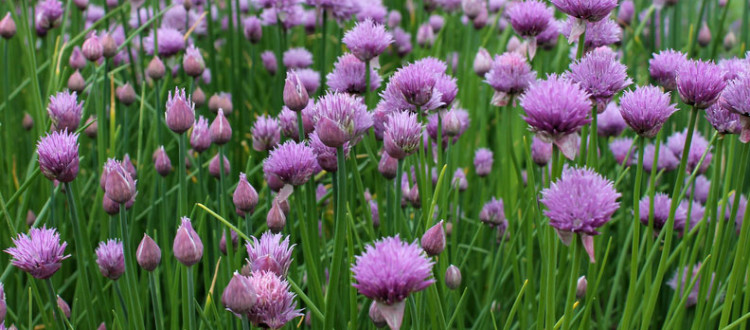Chives
Chives (Allium schoenoprasum) is a cold tolerant perennial herb found throughout North America, Europe and Asia, and is a member of the onion family. There are two varieties of chives, onion and garlic. Onion chives have slender, tubular and hollow leaves with a mild onion taste. Garlic chives have fat, blade-like leaves with a distinctive garlic-onion flavor and aroma.
Chives grow in dense clusters between 12 and 20 inches in length before flowering, making them ideal to use as a border in an herb garden. Plant in full sun or partial shade in loamy, well-drained soil for best results.
How to Plant
Plant chive starts in the spring after the soil has warmed up. Chives require consistent watering throughout the growing season. Once established in a garden, chives tend to come back year after year, but are easy to dig up. The beautiful purple flowers they produce are edible, but if not harvested the ripe flowers will spread their seeds, which will result in an abundance of chives the following season.
Fertilizing
When planting, be sure to incorporate lost of composted material into the soil as well as a well-balanced, general purpose fertilizer (16-16-8). Make sure the seed bed is well watered before planting. Continue to use consistent watering throughout the growing season and refresh in early and mid summer with a good nitrogen fertilizer, such as a 21-0-0.
Harvesting
Chives can be harvested using a knife or scissors beginning about six weeks after planting. Store the cut leaves in a plastic bag in your refrigerator for up to one week, or for best results use right away. Discard any brown leaves as you harvest.
Recommendations for Use
- Use in dips, omelets, cheese spreads, and salad dressings
- Sprinkle over baked potatoes, deviled eggs, and canapés
- Use in salads, such as green salad, potato salad, or tuna salad
Recipes: Green Goddess Salad Dressing

